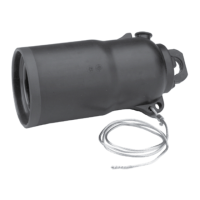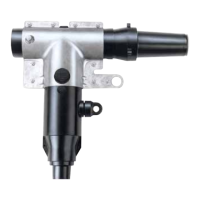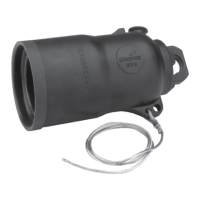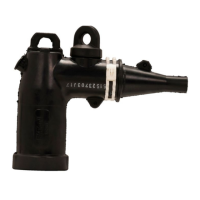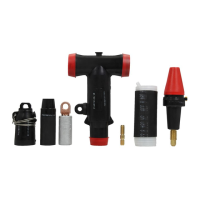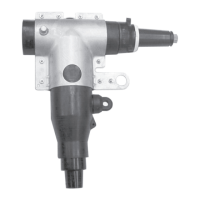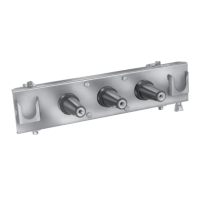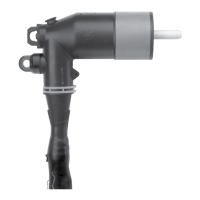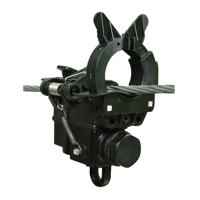protection parameters for the control. When the operator
panel display lights are active and the ALT PROFILE 1
indicator is not illuminated, the Normal profile is active. Only
one profile can be active.
To select the alternate profile, press the ALT
PROFILE 1 button.
To return to the Normal profile, press the ALT PROFILE 1
button to deselect it.
Protection profile selection can also be completed remotely
via remote communications or configurable logic.
IMPORTANT
If unused, the alternate profile should be programmed
with the same settings as the Normal profile. Default
settings on the unused alternate profile can cause
unnecessary outages if they are below normal
systemrequirements.
IMPORTANT
Check minimum trip values prior to changing profiles to
avoid misoperation of the control under load conditions.
Control features
The Form 4D pole-mount recloser control offers numerous
standard features and accessories that allow the user the
utmost flexibility applying the recloser control.
Control security
The Form 4D pole-mount recloser control offers customer-
programmable security codes to limit control programming
and viewing function access to authorized personnel. The
front panel Human-Machine Interface (HMI) includes a
user-selected security code to access the settings. Plus, the
ProView NXG interface software has it’s own security levels
for multiple-user access.
Refer to Service Information S280-104-2 Form 4D
Microprocessor-Based Recloser Control Programming
Guide for additional information regarding how to set and
changepasswords.
Password recovery
If your password is lost, contact your Eaton representative.
Protection profiles
Two protection profiles capable of fully specifying control
operation are standard in the control. Each protection profile
includes the following as a minimum:
Overcurrent Protection.
Over/Undervoltage Protection.
Over/Underfrequency Protection.
Hot Line Tag Functionality.
Sync Check.
Sensitive Earth Fault Protection.
Sequence Coordination.
Operation Settings.
Time current curves
Time-current curves are available for both fast and delayed
operations for phase and ground protection. Each time-
current curve is selected from a list of pre-defined and five
user-defined curves which can be further customized by
the user. The time-current curves can be viewed from a
graphical TCC Editor II to visualize any modifications prior to
configuring the control.
The time-current curves include the following modifications
for phase and ground protection:
Time Multiplier with a range of 0.1 to 25.
Time Adder with a range of 0 to 30 seconds in .01
second increments.
Minimum Response Time with a range of 0.01 to 1 seconds.
High Current Trip multiplier with a range of 1 to 32 multipliers.
High Current Trip Time Delay with a range of 0.01 to .150 second.
Reset co-efficient with a range of 1e-06 to 30 seconds.
Sequence coordination
Sequence Coordination eliminates nuisance tripping
through trip coordination. It allows the control to step
through selected operations in the operating sequence
without tripping. The number of Sequence Coordination
advances is programmable from one to three operations
to provide trip coordination with a downline recloser.
This feature is independently programmable for each
protectionprofile.
Cold load pickup
The control includes a Cold Load Pickup feature to prevent
the control from tripping due to inrush while energizing
non-fault system loads. This feature has independently
programmable minimum trip value, time-current curve,
reclose interval, and number of operations to lockout for
each protection profile. Cold Load Pickup also includes TCC
Multipliers, TCC Adders, Minimum Response Time, Reset
Co-efficient, and High Current Lockout. Also, direct values,
not multiples of minimum trip, are provided for high current
lockout. When enabled, Cold Load Pickup is active for any
close operation.
Fast trips disabled
The control includes a Fast Trips Disabled feature to modify
protection, so that all trip operations use the programmed
Fast Trips Disabled (FTD) TCC. This feature is independently
selectable for each protection profile. All trip operations
will time on FTD TCC. Typically, TCC1 is fast and TCC2
is delayed. So, as an example, the control will change
9OPERATION INSTRUCTIONS MN280049EN September 2017
Form 4D Microprocessor-based pole-mount recloser control installation and operation instructions

